What is Chronic Pain Management?
Chronic pain is persistent pain lasting 12 weeks or longer despite medication or treatment. It can accompany conditions like arthritis, a back sprain or an ongoing cause like illness. It can be irregular or continuous and affect work and daily activities.
Ayurveda offers a natural and safe approach, addressing the root causes of pain and providing long-term relief.
In Ayurveda, chronic pain is viewed as an imbalance in the vata doshas. It may appear in various ways and affect different areas of the body. It is often classified according to its origin or location.
Common types of pain are:
• Neuropathic pain, which affects nerves
• Musculoskeletal pain, which affects muscles and bones
• Visceral pain, which comes from inside organs
What causes chronic pain?
Common causes include headaches, joint pain, shoulder pain, and backaches, as well as conditions like osteoarthritis, migraines, and fibromyalgia. Arthritis and cancer can also cause chronic pain. It affects both physical and emotional well-being, significantly impacting the quality of life.
Furthermore, many people suffer from chronic pain while having no history of damage or an apparent medical problem.
Symptoms of Chronic Pain:
Chronic pain often leads to fatigue, sleeplessness, stress, and depression. Painkillers and physiotherapy are commonly used but usually lack effectiveness.
The symptoms of chronic pain include:
• Mild to Severe Pain: The intensity of the pain can vary greatly, ranging from mild discomfort to unbearable, severe pain.
• Shooting, Burning, and Aching Sensation: The pain might feel like a sharp shooting sensation, a burning feeling, or a constant aching.
• Discomfort, Stiffness, or Soreness: Chronic pain can cause persistent discomfort, stiffening and soreness in the affected area.
Ayurvedic Chronic Pain Management Techniques and Treatments:
Some of the ayurvedic systematic techniques, massages, and pain relieving treatments can reduce chronic pain effectively. The Chronic Pain Management treatment includes
Abhyanga Massage:
It uses specific medicated or herbal oils followed by steam to improve blood circulation, remove toxins, strengthen muscles, and nourish the skin.
Patra Pinda Sweda:
Swedana (Fomentation) is a traditional method of using herbs and powders. It is effective in treating joint pain, strokes and other musculoskeletal conditions.
Mardana with Sweda:
A deep tissue relaxation massage includes applying medicated oils to pressure points, which helps to relieve muscular aches.
Abhyanga and Pariseka:
The process of pouring a warm herbal liquid in a steady stream over the body. It effectively treats joint pain, stroke, and other musculoskeletal problems.
Shashtika shali Pinda Sweda:
A unique blend of Navara rice is processed into a poultice by a decoction of herbs and milk and used for fomentation.
Kati/Greeva/Janu Basti:
Warm medicinal oils applied during the treatment lubricate the joints and energize the local marmas (vital points), alleviating pain and edema.
Precautions to Avoid Aggravating Chronic Pain
To relieve chronic pain effectively, taking precautions to avoid the condition is crucial. These precautions include:
- Avoiding intense physical activity that may increase pain.
- Stress reduction through relaxation techniques such as yoga and meditation.
- Maintaining a healthy weight helps to prevent chronic pain.
- Following prescribed medical treatment and plans
Diet and Lifestyle Modifications;
Diet and lifestyle play an essential part in controlling chronic pain. Ayurveda recommends:
Anti-Inflammatory Diet: The anti-inflammatory diet focuses on foods high in antioxidants and omega-3 fatty acids.
Constant Physical activity: Regular exercise, such as swimming or mild yoga, can improve flexibility and reduce pain
Adequate Sleep: Taking sufficient rest is vital for pain management.
Stress and anxiety reduction: Practising relaxation techniques such as Pranayama or engaging in any sports helps in reducing stress
Prevention Is Better Than Cure
Preventing chronic pain is better than managing it. Good posture, a healthy lifestyle, and prompt treatment for injuries or conditions can reduce the risk of chronic pain.
Conclusion
Chronic pain can be severe, but effective treatment is possible with the correct approach. Ayurveda offers a holistic and customized approach to chronic pain to restore the body’s balance. It is important to remember that treatment outcomes vary; Thus, contact Shathayu Clinic for personalized and expert treatment.
FAQs
1. What is chronic pain?
Chronic pain means pain that lasts for 12 weeks or more, even after treatment or medicine. It can affect the back, joints, or muscles and make daily life difficult.
2. How does Ayurveda explain chronic pain?
Ayurveda says chronic pain happens when the Vata dosha becomes imbalanced. This imbalance blocks body energy, causing stiffness, pain, or numbness.
3. What is Ayurvedic treatment for chronic pain?
Ayurvedic treatment for chronic pain focuses on finding the root cause. It uses therapies, oils, diet changes, and relaxation methods to restore body balance.
4. Can Ayurveda completely cure chronic pain?
Ayurveda may not “cure” every case, but it helps reduce pain naturally, improves mobility, and supports long-term pain management without strong chemicals.
5. What are common Ayurvedic therapies for pain relief?
Therapies include Abhyanga (oil massage), Patra Pinda Sweda (herbal bundle therapy), and Panchakarma detox treatments for deep healing.
6. Does Ayurveda help with nerve pain?
Yes. Treatments like Basti (herbal enema) and Mardana massage can relax nerves and relieve pain caused by sciatica or other nerve issues.


adjustments in daily life to ease knee stress.
Yes, simple lifestyle changes often go a long way in easing knee strain. Thanks for sharing your thoughts!
Nice blog here.
Thanks, Marcus
Nice content. it’s really helpful for the Reader.
Thanks, Sabka Vaidya